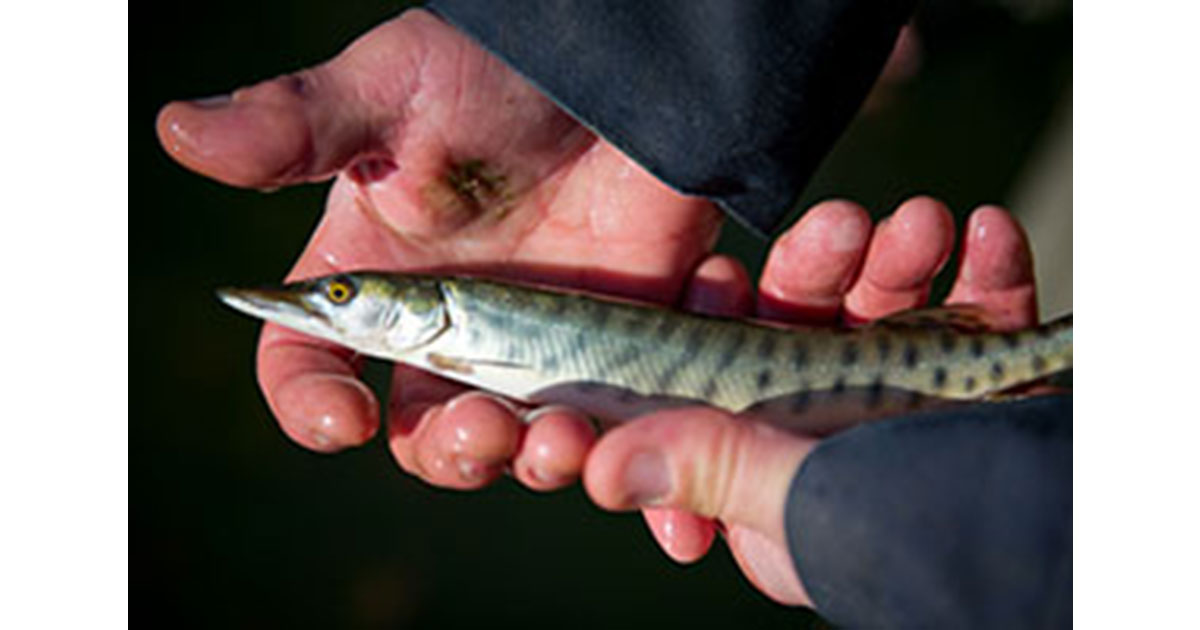By Louie Stout
 Young Muskie Fingerking
Young Muskie Fingerking
Angler assistance has become an important part of muskie management on northern Indiana lakes.
Much of that assistance is coming from guides and muskie club members who purchased their own tag scanners and provide the DNR information of tagged fish they catch.
When muskies are stocked, they are implanted with a tiny tag that can be read with a relatively inexpensive hand-held scanner. It’s similar to the tags and scanners used for dogs and cats.
The angler sends the DNR a mobile phone picture of the tag number on the scanner along with length and any other details. Fisheries officials provide that angler with details about the fish.
In 2022 there were 122 tags submitted and another 150 were submitted last summer.
“We can tell the angler when the fish was stocked, growth progress and if it’s been caught before,” said DNR Biologist Tyler DeLauder.
Some interesting observations have come from the program. For example, one muskie that was tagged and released in Webster was caught by an angler fishing James Lake.
“One Guide submitted me a tag and a few more a couple weeks later,” recalled DeLauder. “We discovered he had caught the same 43 incher three times within a couple of weeks, and twice in nearly the same spot.”
Better stocking survival
When the Indiana DNR fish managers go to Webster Lake in April for their annual egg-taking, they will be building upon their data base to help tweak stocking efforts. Early observations already indicate that young muskies held over the winter and stocked in the spring survive much better than those planted in the previous fall. Holding muskies over the winter runs up the hatchery bill but preliminary results are proving it’s worth it.
“We’re becoming more believers that (larger) size of fish that are stocked have significantly better survival,” the biologist said.
The current average size of Webster muskies is in the 37- to 38-inch range, although there obviously are some that are bigger.
“We have a couple strong year classes out there and we’re moving toward larger fish,” DeLauder said. “We’re just a few years away from an average size in that mid-40s-inch fish that anglers prefer,” DeLauder said.





